Abstract
Lung cancer mortality among 1152 men working at three English chromate pigment factories was studied from the 1930s or 1940s until 1981. Workers at factory C were exposed only to lead chromate and experienced normal mortality (Obs/Exp deaths 7/6.45). Workers at factories A and B were exposed to both lead and zinc chromate; mortality was normal among those who had only low exposure (O/E 7/6.95). For workers with high or medium exposure lung cancer mortality was significantly raised among men remaining at least a year after entering service at factory A during 1932-54 (O/E 21/9.45) and at factory B during 1948-67 (O/E 11/2.50). At factory A, 1933-46 entrants staying only 3-11 months were not affected (O/E 6/5.04) and 1955-63 entrants also appeared unaffected (O/E 2/2.00); working conditions there improved in 1955. The hazard at factories A and B affected workers who left after one year as well as those with longer service, and latent intervals were unusually short. The results indicate that moderate or heavy exposure to zinc chromate may give rise to a severe risk of developing lung cancer, but that exposure which is relatively mild or lasts less than a year may not constitute an effective risk. The results provide no indication that lead chromate induces lung cancer in man, even under conditions conducive to lead poisoning.
Full text
PDF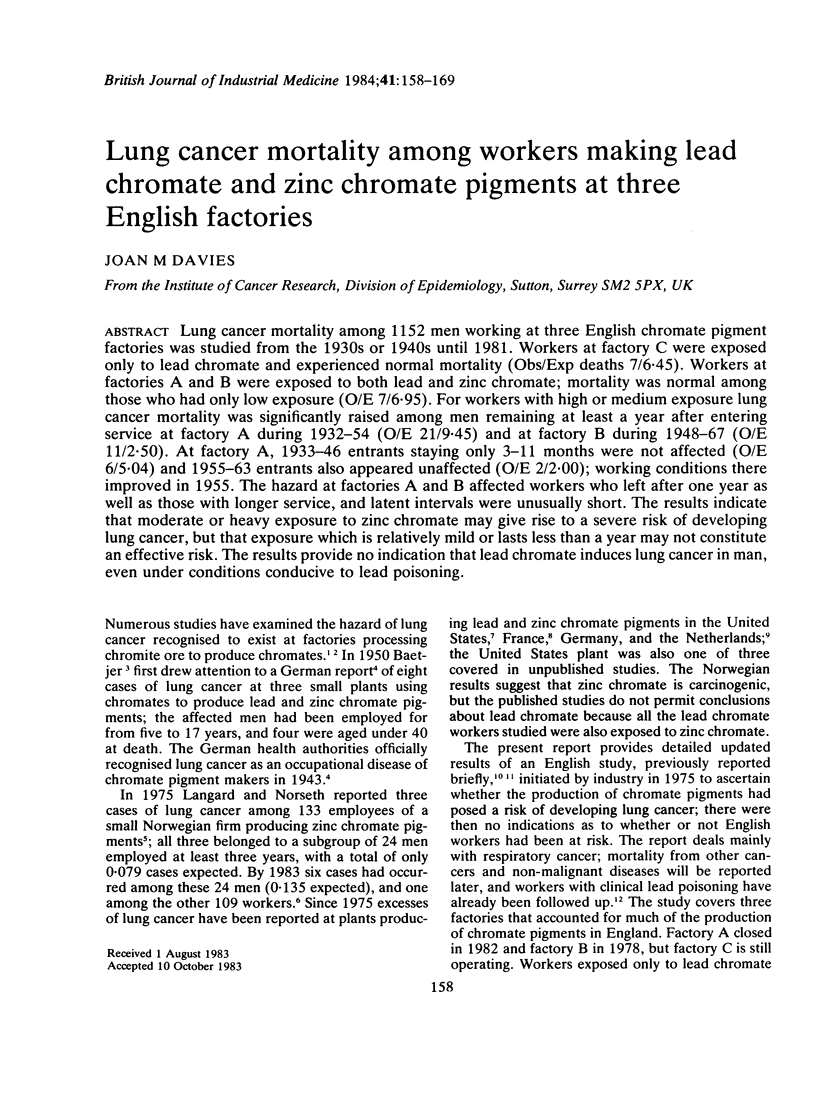


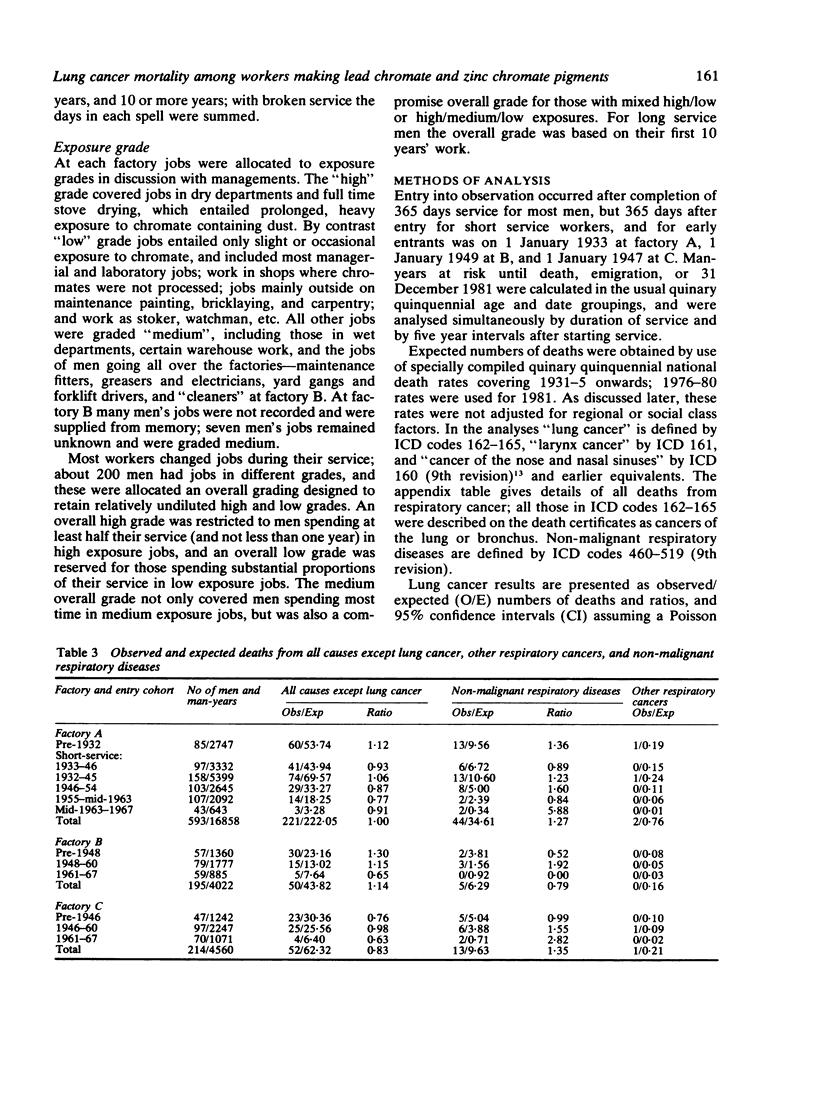
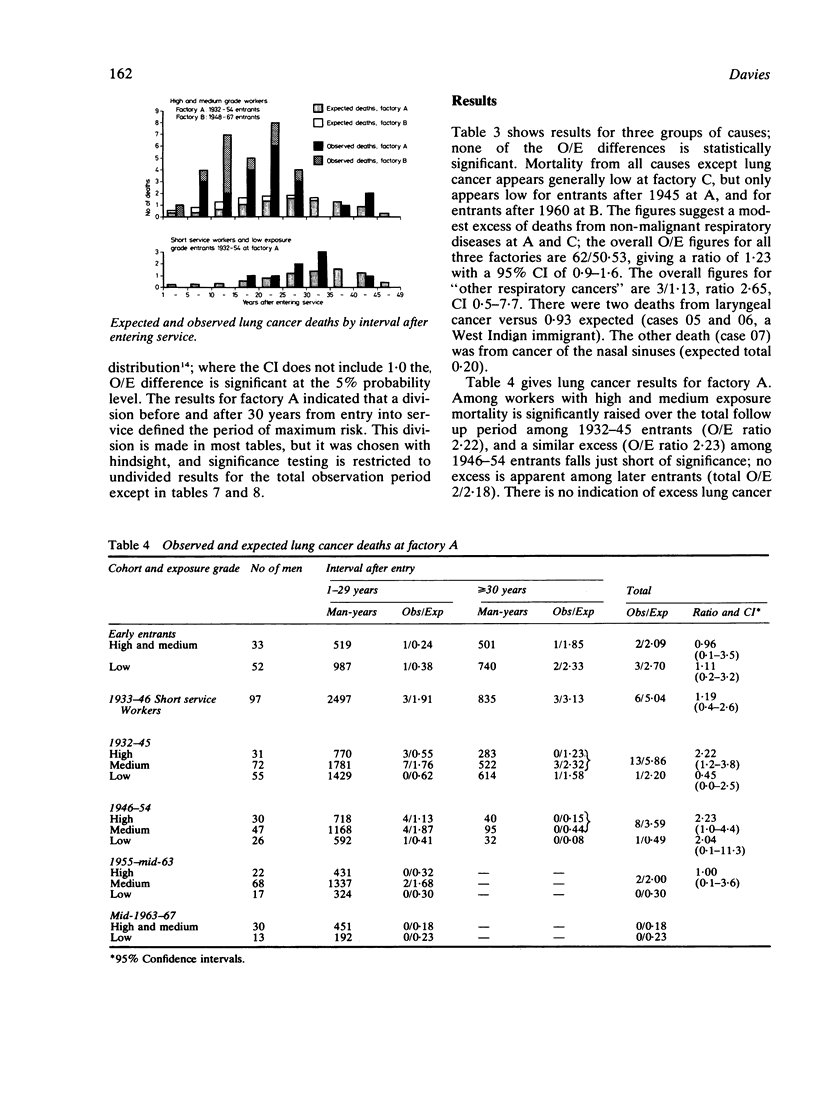
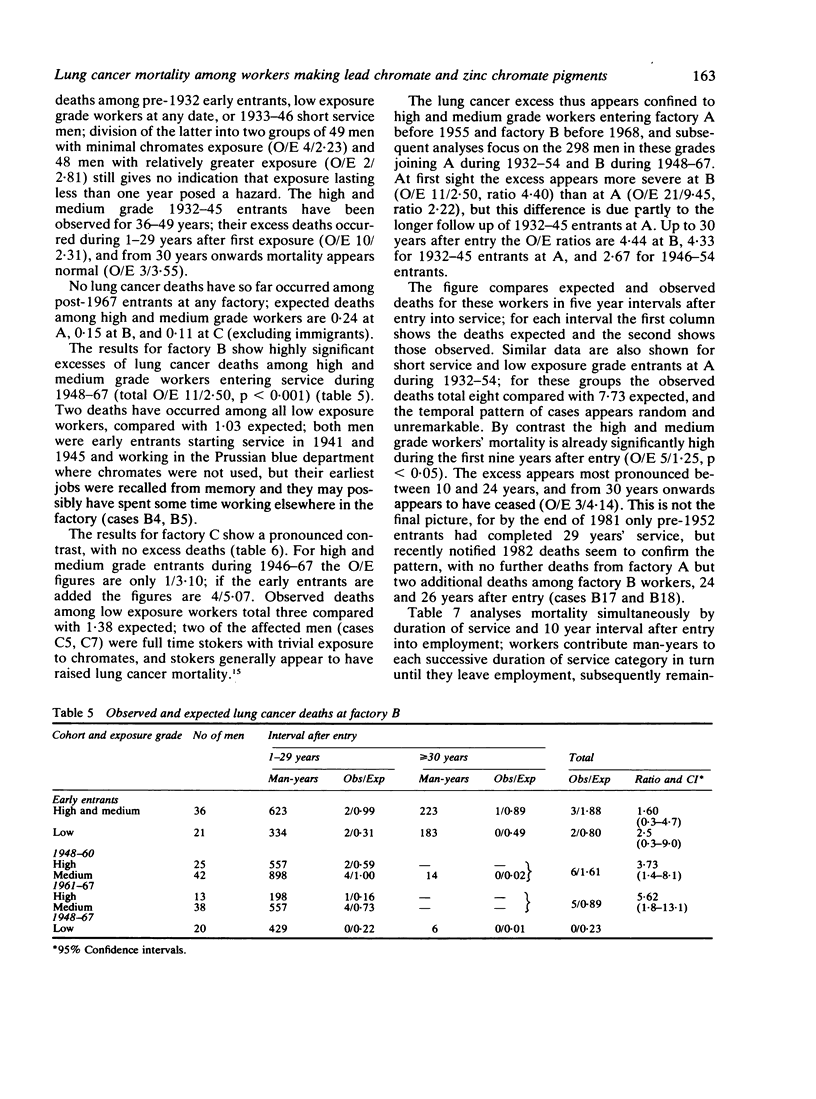
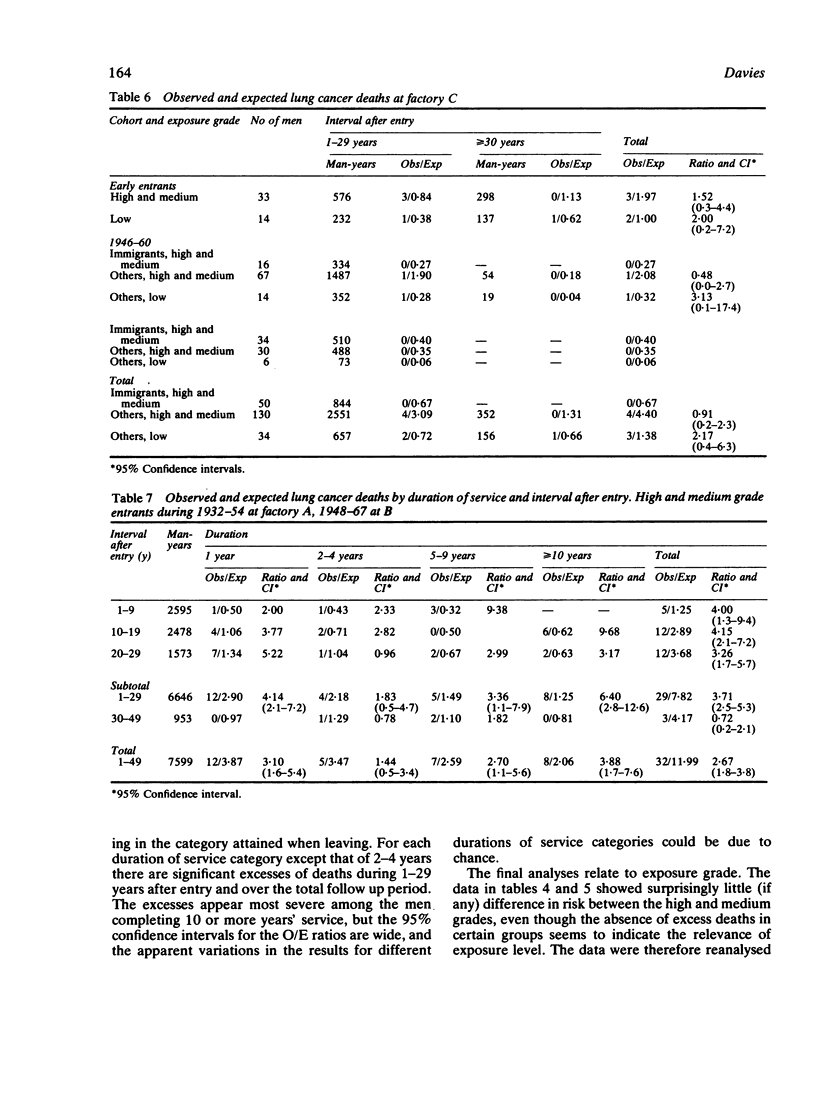
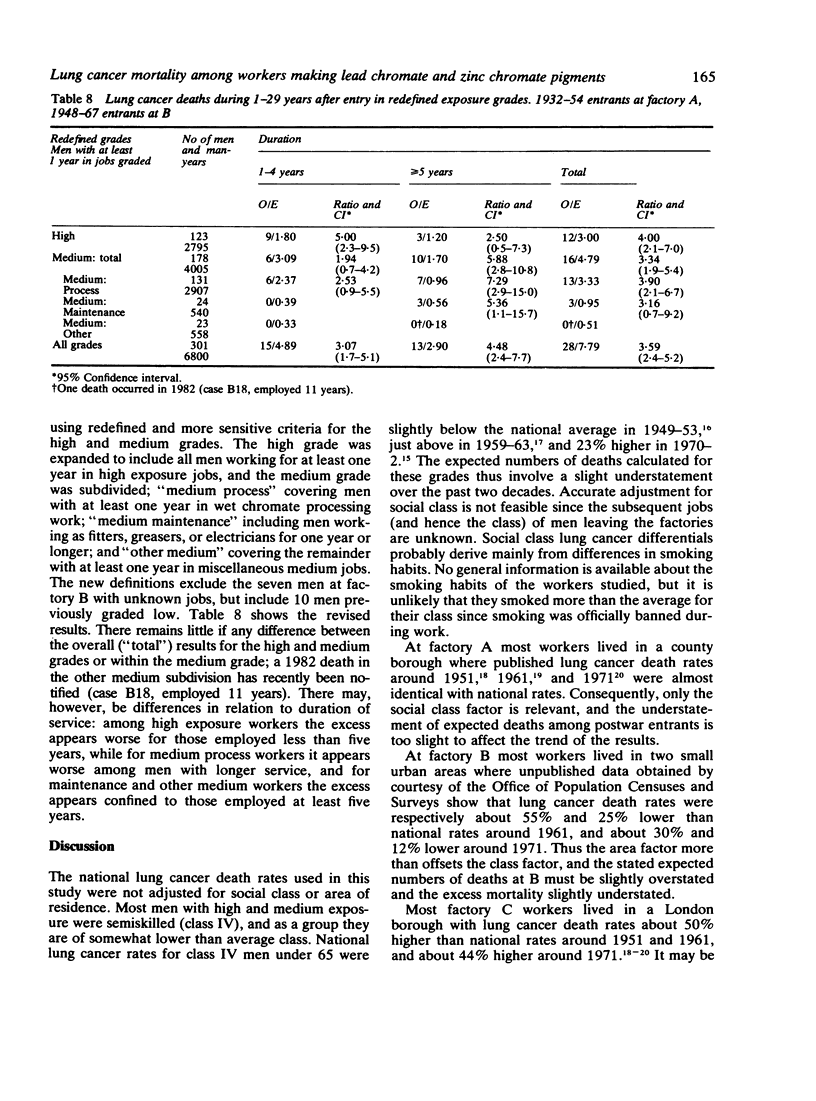

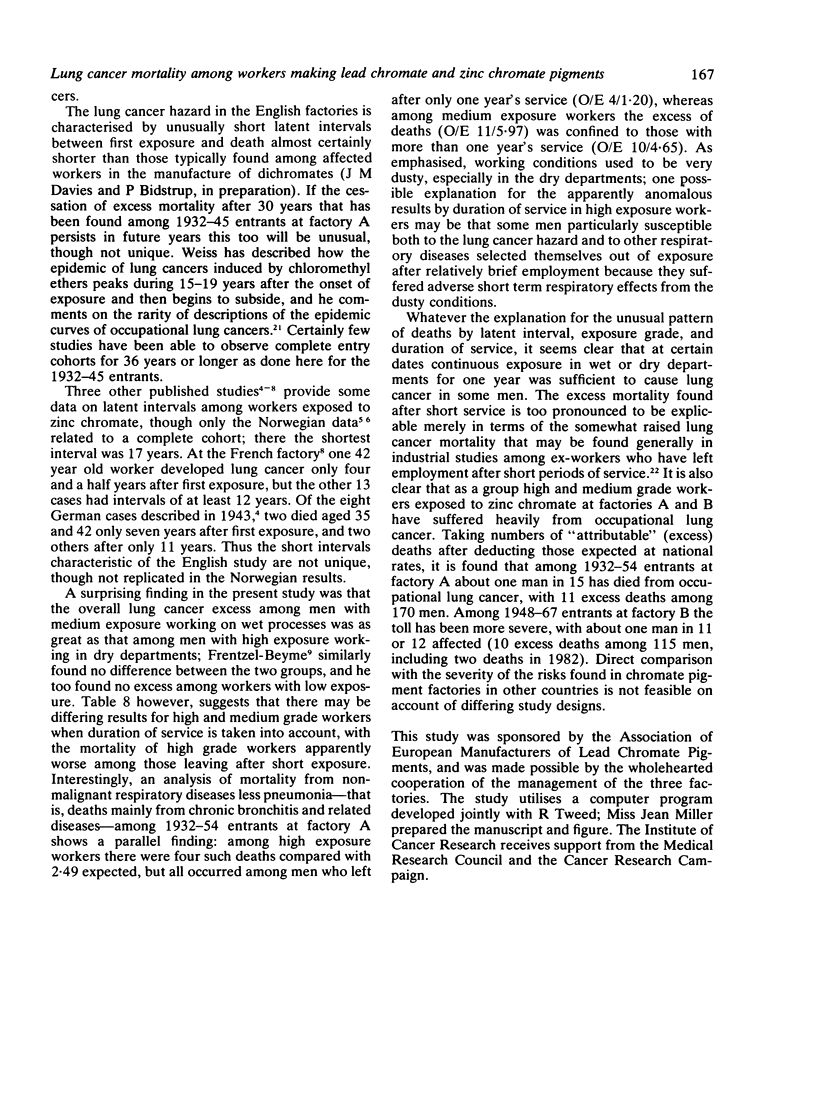
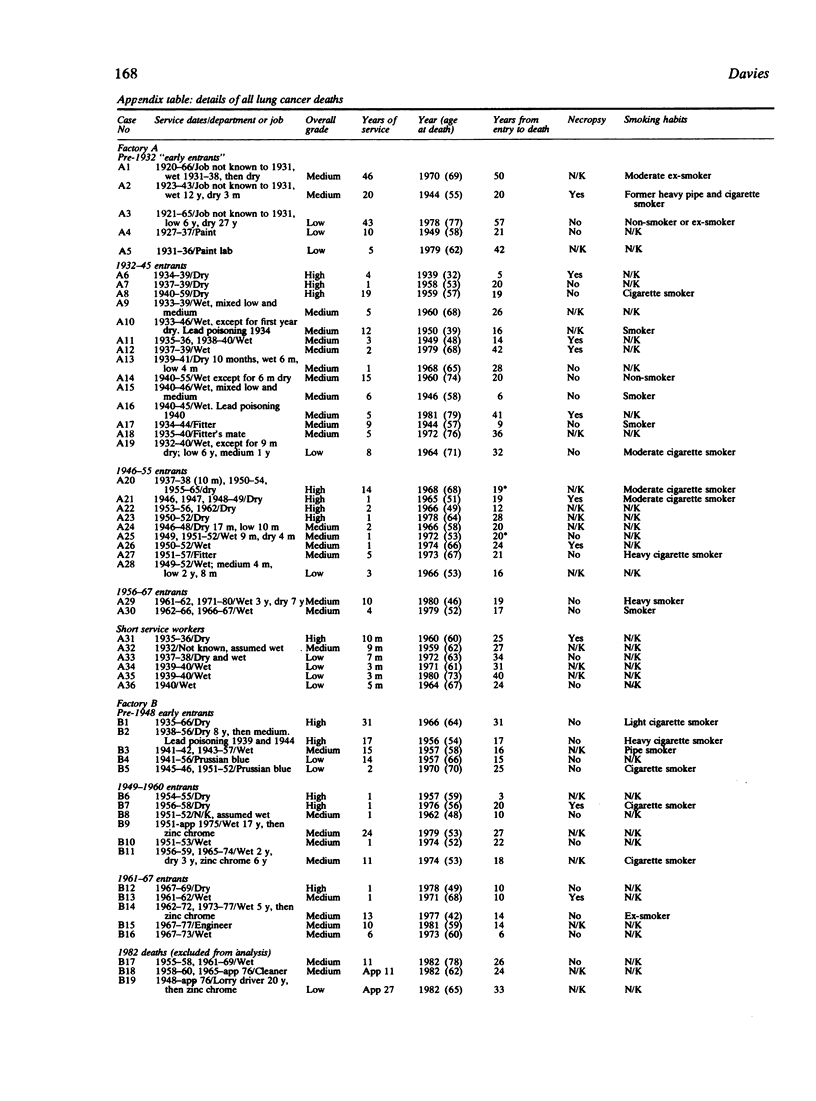
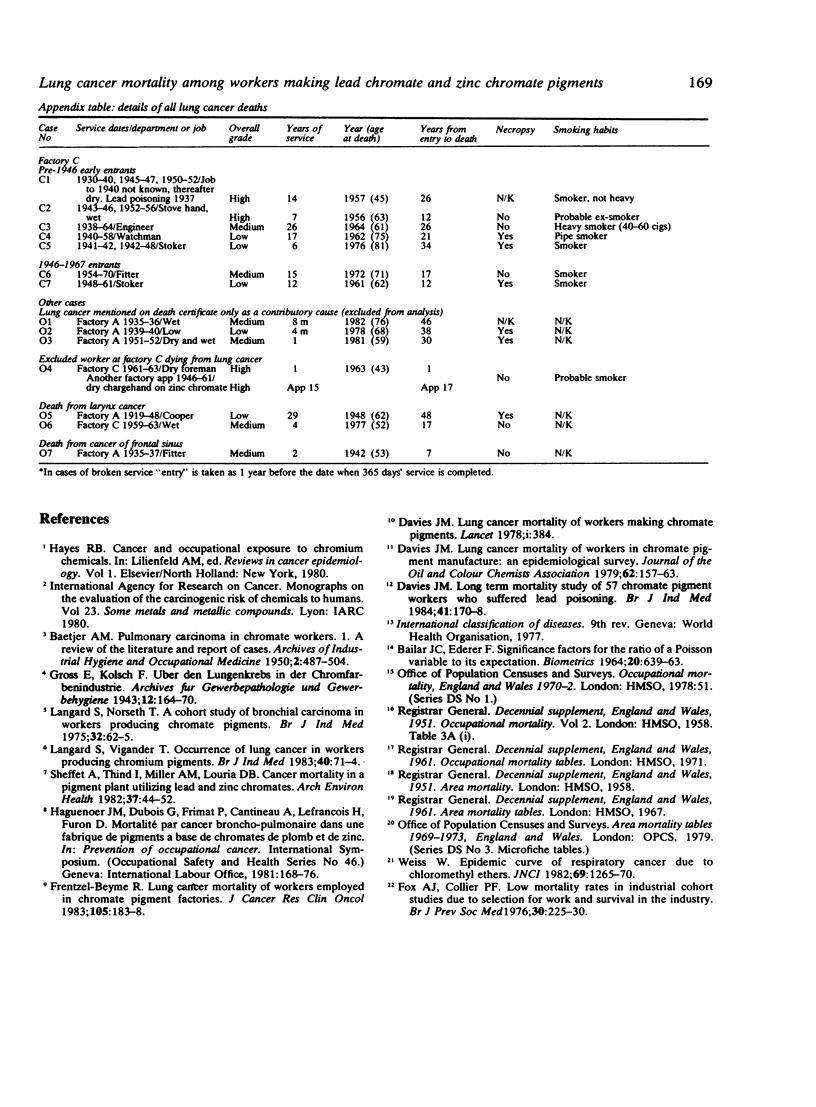
Selected References
These references are in PubMed. This may not be the complete list of references from this article.
- BAETJER A. M. Pulmonary carcinoma in chromate workers. 1. A review of the literature and report of cases. AMA Arch Ind Hyg Occup Med. 1950 Nov;2(5):487–504. [PubMed] [Google Scholar]
- Davies J. M. Long term mortality study of chromate pigment workers who suffered lead poisoning. Br J Ind Med. 1984 May;41(2):170–178. doi: 10.1136/oem.41.2.170. [DOI] [PMC free article] [PubMed] [Google Scholar]
- Davies J. M. Lung-cancer mortality of workers making chrome pigments. Lancet. 1978 Feb 18;1(8060):384–384. doi: 10.1016/s0140-6736(78)91103-0. [DOI] [PubMed] [Google Scholar]
- Frentzel-Beyme R. Lung cancer mortality of workers employed in chromate pigment factories. A multicentric European epidemiological study. J Cancer Res Clin Oncol. 1983;105(2):183–188. doi: 10.1007/BF00406930. [DOI] [PMC free article] [PubMed] [Google Scholar]
- Langård S., Norseth T. A cohort study of bronchial carcinomas in workers producing chromate pigments. Br J Ind Med. 1975 Feb;32(1):62–65. doi: 10.1136/oem.32.1.62. [DOI] [PMC free article] [PubMed] [Google Scholar]
- Langård S., Vigander T. Occurrence of lung cancer in workers producing chromium pigments. Br J Ind Med. 1983 Feb;40(1):71–74. doi: 10.1136/oem.40.1.71. [DOI] [PMC free article] [PubMed] [Google Scholar]
- Sheffet A., Thind I., Miller A. M., Louria D. B. Cancer mortality in a pigment plant utilizing lead and zinc chromates. Arch Environ Health. 1982 Jan-Feb;37(1):44–52. doi: 10.1080/00039896.1982.10667532. [DOI] [PubMed] [Google Scholar]
- Weiss W. Epidemic curve of respiratory cancer due to chloromethyl ethers. J Natl Cancer Inst. 1982 Dec;69(6):1265–1270. [PubMed] [Google Scholar]


